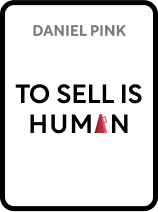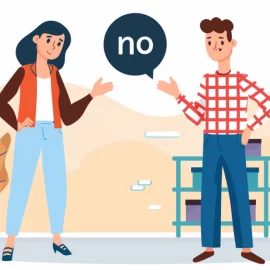

This article is an excerpt from the Shortform book guide to "To Sell Is Human" by Daniel H. Pink. Shortform has the world's best summaries and analyses of books you should be reading.
Like this article? Sign up for a free trial here .
What does the history of selling look like? Are all humans innately salespeople? How has the sales industry evolved over the years?
In the book To Sell Is Human, Daniel Pink discusses the three origins of the shifts in sales over time: economic change, the rise in technology, and the growth of the education and medical sectors. Due to these three factors, sales have gone from being profit-focused to being buyer-focused.
Continue reading to learn more about the history of selling and the three major origins of change.
How Did We All End Up in Sales?
Daniel Pink contends that in the modern era, sales has been redefined in two ways: profit through the sale of material goods is no longer the core focus. Instead, the focus is on influencing buyers to act (and ultimately, buy). Additionally, the traditional sales philosophy has transformed to reflect the new power balance between buyer and seller in which both have access to product information. The old paradigm gave sellers a monopoly on information and therefore power, with profit being the priority. Now, that power is equal, and service to the buyer is the seller’s new priority. According to Pink, these shifts have three origins throughout the history of selling:
Origin #1: Economic Change and Need for Adaptability
Pink notes that in the past, a stable economy meant that business environments were predictable. Employers didn’t need workers to have adaptable skill sets. Employees knew what was expected of them week to week, and it wasn’t necessary to deviate. These factors allowed sales to become a concentrated skill set, and salespeople could become life-long sales specialists.
Since the heyday of traditional sales (encompassing much of the 1900s and shifting with the turn of the century), the economy has grown and is more diverse. The modern economy values movement, adaptability, and a broader range of skills. Everyone is now “selling” in some capacity. Having more people with sales skills has meant more profit for businesses. A flexible skillset cuts costs, because you have fewer employees applying a wider range of skills and essentially completing the same volume of tasks as were being completed within the traditional model. With a growing economy, a flexible skill set including sales is a major asset.
| Sales Skills and Soft Skills Are Birds of a Feather As sales skills have become more critical for workers, so have interpersonal or “soft” skills, which are closely related: To sell, you need to be able to relate to people. So it’s not surprising that both skill types are in increasing demand in the changing economy. Specifically, soft skills include social skills, emotional intelligence, time management, and handling conflict effectively. They’re valuable because:They allow you to connect effectively with others, and give you the ability to navigate obstacles such as conflict with others or personal limitations. They keep you adaptable because they’re transferable to another job. While it’s easy to see the value of soft skills, actually developing them is more complex. Given their personalized and often intuitive nature, it can be difficult to make them teachable or measurable. So how do you acquire them? Try identifying soft skills you may already have and focus on strengthening them. For example, if you’ve ever played a team sport or worked in food service, retail, or hospitality, you’re likely skilled in adaptability, teamwork, and problem-solving. Also, consider areas of work where you’ve experienced struggle, and determine which soft skills to fill in the gaps with. For example, if you struggle when customers or clients get upset, you may need to focus on improving or acquiring conflict resolution skills. |
Origin #2: Rise of Technology and Entrepreneurship
It once seemed as though technology would eliminate the need for salespeople by automating the sales process online. But instead, Pink contends, the internet gave the masses access to information, which transformed the landscape of sales. First, the internet derailed traditional sales by shifting the information power balance (discussed further in Chapter 4) from seller to buyer. Second, it gave people who didn’t have the resources to run their own businesses access to free information, alternative business platforms, and new ways to build their own customer base. Anyone could become a self-starter, so entrepreneurs and startups became a bigger part of the economy.
Unlike larger companies, smaller businesses often don’t need, or can’t afford, specialized departments like sales. Entrepreneurs must wear many hats, nearly all of which involve moving others (for example, growing a social media following, motivating employees to work efficiently, securing outside funding for the business, and so on). In this way, the self-starter era has expanded contemporary selling.
| Why Entrepreneurs Need Sales Skills While it might be tempting to argue that entrepreneurs are visionaries more than salespeople, the vast majority of entrepreneurial tasks involve sales for the following reasons: The best ideas are improvements: Rather than being innovative, many of the most successful products are improvements on the original idea. For example, today’s big search engines like Google and Yahoo are based on the WebCrawler, which debuted in 1994. Entrepreneurs succeed by seeing the value of an idea and selling an improvement to a broader market. Brand is more important than raw value: Many brands deliver nearly the same customer experience (for example, you likely won’t be able to tell the difference between Cheerios and an off-brand counterpart). This means the ability to differentiate and sell your brand or experience is critical to your success. Cash flow is critical to sustainability: As exciting as it is to generate ideas, you can’t execute them without consistent cash flow. And developing a consistent revenue stream requires you to be a salesperson first. Products must continually meet customer needs: You need sales skills to understand your customers’ evolving needs and adapt your product to meet them. |
Origin #3: Growth of the Education and Medical Sectors
Pink believes that one of the most notable changes in the economy has been the creation of millions of new jobs in health care and education (which range from nurse practitioners to college test prep providers). He contends that the growth of these sectors is also driving demand for sales skills (in this case, the ability to persuade someone to part with their resources because it will benefit them). Teachers convince students that giving time, energy, and attention to class will benefit them. Doctors convince patients that doing unpleasant or uncomfortable things (like consenting to surgery) will support their long-term health.
| Why Are Health and Education Growing So Much? Many factors are contributing to the growth of the health care and education sectors. Health care: America’s population is aging. By 2030, 72 million Americans will be 65 or older, increasing the need for health care services. The increased demand is creating a variety of job opportunities. Additionally, many jobs in health care don’t require extensive education or credentials. Pay is stable and often meets or exceeds the national wage average, which attracts potential employees. Education: Educational levels continue to increase globally. The UN had the goal of reaching universal primary education completion by 2015, and by that year, primary education enrollment in developing countries had increased by 83% from the year 2000 (91% enrollment overall). People are recognizing the relationship between education and financial success. As a result of an early 2000s study, the Organization for Economic Co-Operation and Development theorizes that if all children in developing countries were to meet national school system targets, the overall income of these countries could increase 16% over 80 years. The evolution of technology requires continually updating skills. Education was originally designed to serve the needs of the Industrial Revolution for workers who could perform repetitive mechanical tasks and follow directions. But now, education has to be updated to meet the needs of changing technology and the need for critical thinking skills. It’s worth noting that the power imbalance in education and health care created by “buyers” lacking the information “sellers” have access to suggests that these sectors are actually more aligned with traditional sales than the modern sales environment Pink describes. For example, students (buyers) aren’t able to learn on their own the way they can learn with the support of an educator (seller), and patients (buyers) receive more accurate information from medical providers (sellers) than from a Google search. Further, these sectors are arguably more profit-focused than service-focused, considering the high costs of both education and medical treatment. |

———End of Preview———
Like what you just read? Read the rest of the world's best book summary and analysis of Daniel H. Pink's "To Sell Is Human" at Shortform .
Here's what you'll find in our full To Sell Is Human summary :
- Why we are all salespeople in the modern world
- The history, evolution, and significance of sales
- How you can effectively harness sales skills to create purpose, growth, or “movement” in your life






